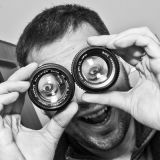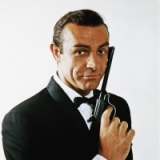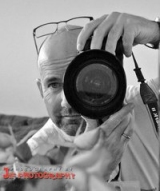- Forum
- Photography and Camera Forum
- Camera Manufacturers - by Brand
- Canon Camera Forum
- full frame or not
full frame or not
-
 Topic Author
Topic Author
- fotoXopher
- Newbie
- Followers: 0
-
Points:
0
Post #4612
Post #6000
Canon 7D, 15-85mm, 18-55mm, 70-200mm, 100mm Macro, Sigma 120-300mm, Speedlite 430EX II
A bad day at the race track is better than a good day in the office
-

- Yasko
- Photography Hooked
-
- Canon 5D, Canon 30D, Olympus tough P&S
- Followers: 47
- Posts: 805
-
Points:
30
-

- KVRNut
- Newbie
- Followers: 4
-
Points:
10
Post #6447
-

- mfharper
- Newbie
- Follower: 1
-
Points:
0
Post #7564
-

- Scotty
- Agent 007
- James Bond, PT mod.
- Followers: 1088
- Posts: 9872
-
Points:
14759
Post #8753
5d mark II if you're going to blow up often.
When the last candle has been blown out
and the last glass of champagne has been drunk
All that you are left with are the memories and the images-David Cooke.
-

- Stealthy Ninja
- Moderator
-
- Fuji X stuff and a 1DsIII for some reason
- Followers: 982
- Posts: 16300
-
Points:
6837
Post #9306
Scotty wrote: If you're going full frame and you are doing landscape/architecture, get a tilt-shift lens. It corrects the focus plane, and also allows you to open up more, and still retain focus.
5d mark II if you're going to blow up often.
LOL I was gonna say this exactly.
-

- rnav8r
- New Kid On The Block
-
- Canon EOS 5dMkII and EOS 50D
- Followers: 22
- Posts: 11
-
Points:
0
Post #32759
Naval aviator by chance, photographer by choice!
Post #32762
“Amateurs worry about equipment, professionals worry about money, masters worry about light, I just make pictures… ” ~ Vernon Trent
-

- H0U53
- New Kid On The Block
-
- Nikon D3000
- Followers: 11
- Posts: 32
-
Points:
0
-

- Stealthy Ninja
- Moderator
-
- Fuji X stuff and a 1DsIII for some reason
- Followers: 982
- Posts: 16300
-
Points:
6837
Post #36680
KVRNut wrote: Go full frame. You'll find that you'll get better results on prints due to having to enlarge a little less due to a larger negative (I'm a film user, okay?
). If I had no choice but to go digital, I wouldn't think twice of going full frame in either 35mm or medium formats. For my styles of photography, it would be worth the cost.
Larger negative?! That's not the way it works with digital. FF or crop doesn't matter, the sensor size doesn't make the "negative" bigger. It's the MP that makes a bigger negative (so to speak).
The advantages of FF are:
It covers more of the lens circle, so any given focal length will be wider on FF than on a crop.
They generally give more details
The apparent DOF is shallower
For a given MP/ISO amount they usually have lower noise and more uniform noise
The disadvantages of FF are:
Less "reach"
They show more of the corners of the lens (usually the least sharp part)
Greater possibility of vignetting.
The apparent DOF is shallower (you sometimes want more DOF
Post #42992
Take a look at the relative sizes of DSLR sensors to see what we're talking about.
-

- Baydream
- Moderator
-
- Canoni/60D/70D/5DmkIII
- Followers: 388
- Posts: 11185
-
Points:
7278
Post #43036
Stealthy Ninja wrote:
KVRNut wrote: Go full frame. You'll find that you'll get better results on prints due to having to enlarge a little less due to a larger negative (I'm a film user, okay?
). If I had no choice but to go digital, I wouldn't think twice of going full frame in either 35mm or medium formats. For my styles of photography, it would be worth the cost.
Larger negative?! That's not the way it works with digital. FF or crop doesn't matter, the sensor size doesn't make the "negative" bigger. It's the MP that makes a bigger negative (so to speak).
The advantages of FF are:
It covers more of the lens circle, so any given focal length will be wider on FF than on a crop.
They generally give more details
The apparent DOF is shallower
For a given MP/ISO amount they usually have lower noise and more uniform noise
The disadvantages of FF are:
Less "reach"
They show more of the corners of the lens (usually the least sharp part)
Greater possibility of vignetting.
The apparent DOF is shallower (you sometimes want more DOF).
Shoot, learn and share. It will make you a better photographer.
fineartamerica.com/profiles/john-g-schickler.html?tab=artwork
-

- photobod
- Paparazzi
-
- Nikon D800 + D300
- Followers: 563
- Posts: 8907
-
Points:
150
Post #43077
www.dcimages.org.uk
"A good photograph is one that communicate a fact, touches the heart, leaves the viewer a changed person for having seen it. It is, in a word, effective." - Irving Penn
- Forum
- Photography and Camera Forum
- Camera Manufacturers - by Brand
- Canon Camera Forum
- full frame or not
Latest Reviews
The Canon EOS R100 is an entry-level mirrorless camera introduced in 2023. But just because it’s an entry-level camera doesn’t mean it’s a bare-bones camera. Find out why in this review!
Nikon’s retro-looking Nikon Zfc is anything but retro. Under its classic body is a host of features and amenities that make it a worthwhile compact mirrorless camera for 2024.
The Canon EOS R50 is one of the newest R-system cameras from Canon. Is it worth your money? Find out all the details you need to know in this comprehensive review.
The Sony FE 70-200mm f/2.8 GM OSS II is Sony’s flagship mirrorless zoom lens. As such, it’s loaded with features and has a top-shelf build quality that makes it a top pick!
Latest Articles
Using leading lines in photography helps improve the composition by drawing viewers in and leading their eye from the foreground to the background. Explore some fine examples of this in this guide!
The Insta360 has one of the best lineups of action cams and 360-degree cameras. With these Insta360 accessories, you can elevate your photography and videography game!
Creating impactful photos of landscapes depends on many factors, not the least of which is your talent behind the lens. This guide explores other elements required for the best product.
The Canon EOS R100 is an entry-level mirrorless camera introduced in 2023. But just because it’s an entry-level camera doesn’t mean it’s a bare-bones camera. Find out why in this review!
Are you ready to upgrade your camera? Before buying new, you might consider the value of purchasing used gear to save money.
The Olympus OM-D E-M10 Mark IV is a micro four thirds camera released in 2020. It’s an entry-level system along with the OM-D E-M5 Mark III. Use this guide to determine which one is best for you!
Blue hour photography might not be as well known as golden hour photography, but it is every bit as good a time to create epic images of landscapes. Learn how in this quick tutorial!
Nikon’s retro-looking Nikon Zfc is anything but retro. Under its classic body is a host of features and amenities that make it a worthwhile compact mirrorless camera for 2024.

















